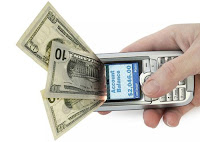The massive overhaul -- chockablock with new menus and new features
-- comes at a challenging time for the company's leaders. Mozilla has been beset with internal strife
as company co-founder and longtime CTO Brendan Eich was elevated to
chief executive and then resigned 11 days later, following a public
outcry over his financial support for an anti-gay marriage law in
California.
Among the more than 1,300 changes, the sweeping improvements in Firefox 29 for desktops introduce a new Firefox Account to simplify its cross-browser Sync feature, a customizable graphical menu, and rounded tabs that emphasize the tab you're in over the others.
"People are using the Web differently than they used to," said Johnathan Nightingale, Mozilla's vice president of Firefox, "and we need to give them a richer set of tools for customizing the way that they experience the Web."
The New Interface
The visual changes take some cues from adjustments that Google has made to Chrome and Microsoft has made to Internet Explorer, such as the triple-line menu icon that now lives on the righthand side of the browser. Gone from Windows and Linux is the orange Firefox menu button.

Two smaller changes arrived early. People who use Firefox have already been exposed to the Download Manager button on the add-on bar, and the browser navigation Forward button disappears unless there's a page to move forward to.
But other improvements are more drastic. The menu button has jumped completely from the left to the right side of the browser, and introduces a touch-friendly, icon-based, customizable menu to Firefox fans.
"Most desktops are not touch enabled, but they're moving that way. You could say it's picking up design ideas from mobile, or you could just say that it's well designed," Nightingale said.
Nightingale doesn't expect everybody to like the new look. His solution? To call up one of the browser's best-loved features: customization.
"We've always been proud of our add-on experience, but the built-in customization tools were in need of love," he said. You can now drag-and-drop to customize the menu, just as you can with other browser interface elements such as the location bar or search box.
Another important interface change has been to ensure that tabs are readable. Tabs, Nightingale said, are a "critical detail."
"Talking about tabs is talking about how people do more than one thing at the same time on the Internet," he said. Firefox has developed a reputation as a browser than can smoothly handle dozens of tabs, and so Nightingale said it was important for Mozilla to make sure that tabs remained legible even as more of them got crammed onto the tab bar.
"We decided not to shrink and shrink the tabs, which would theoretically allow you to have more of them on the screen. It makes more sense to have nice smooth animation and keep some content there to give your eye something to look for," he said.The browser relies on your mouse scroll wheel or navigation arrows at either end of the tab bar for you to access overflow tabs.
Among the more than 1,300 changes, the sweeping improvements in Firefox 29 for desktops introduce a new Firefox Account to simplify its cross-browser Sync feature, a customizable graphical menu, and rounded tabs that emphasize the tab you're in over the others.
"People are using the Web differently than they used to," said Johnathan Nightingale, Mozilla's vice president of Firefox, "and we need to give them a richer set of tools for customizing the way that they experience the Web."
The New Interface
The visual changes take some cues from adjustments that Google has made to Chrome and Microsoft has made to Internet Explorer, such as the triple-line menu icon that now lives on the righthand side of the browser. Gone from Windows and Linux is the orange Firefox menu button.
Two smaller changes arrived early. People who use Firefox have already been exposed to the Download Manager button on the add-on bar, and the browser navigation Forward button disappears unless there's a page to move forward to.
But other improvements are more drastic. The menu button has jumped completely from the left to the right side of the browser, and introduces a touch-friendly, icon-based, customizable menu to Firefox fans.
"Most desktops are not touch enabled, but they're moving that way. You could say it's picking up design ideas from mobile, or you could just say that it's well designed," Nightingale said.
Nightingale doesn't expect everybody to like the new look. His solution? To call up one of the browser's best-loved features: customization.
"We've always been proud of our add-on experience, but the built-in customization tools were in need of love," he said. You can now drag-and-drop to customize the menu, just as you can with other browser interface elements such as the location bar or search box.
Another important interface change has been to ensure that tabs are readable. Tabs, Nightingale said, are a "critical detail."
"Talking about tabs is talking about how people do more than one thing at the same time on the Internet," he said. Firefox has developed a reputation as a browser than can smoothly handle dozens of tabs, and so Nightingale said it was important for Mozilla to make sure that tabs remained legible even as more of them got crammed onto the tab bar.
"We decided not to shrink and shrink the tabs, which would theoretically allow you to have more of them on the screen. It makes more sense to have nice smooth animation and keep some content there to give your eye something to look for," he said.The browser relies on your mouse scroll wheel or navigation arrows at either end of the tab bar for you to access overflow tabs.





